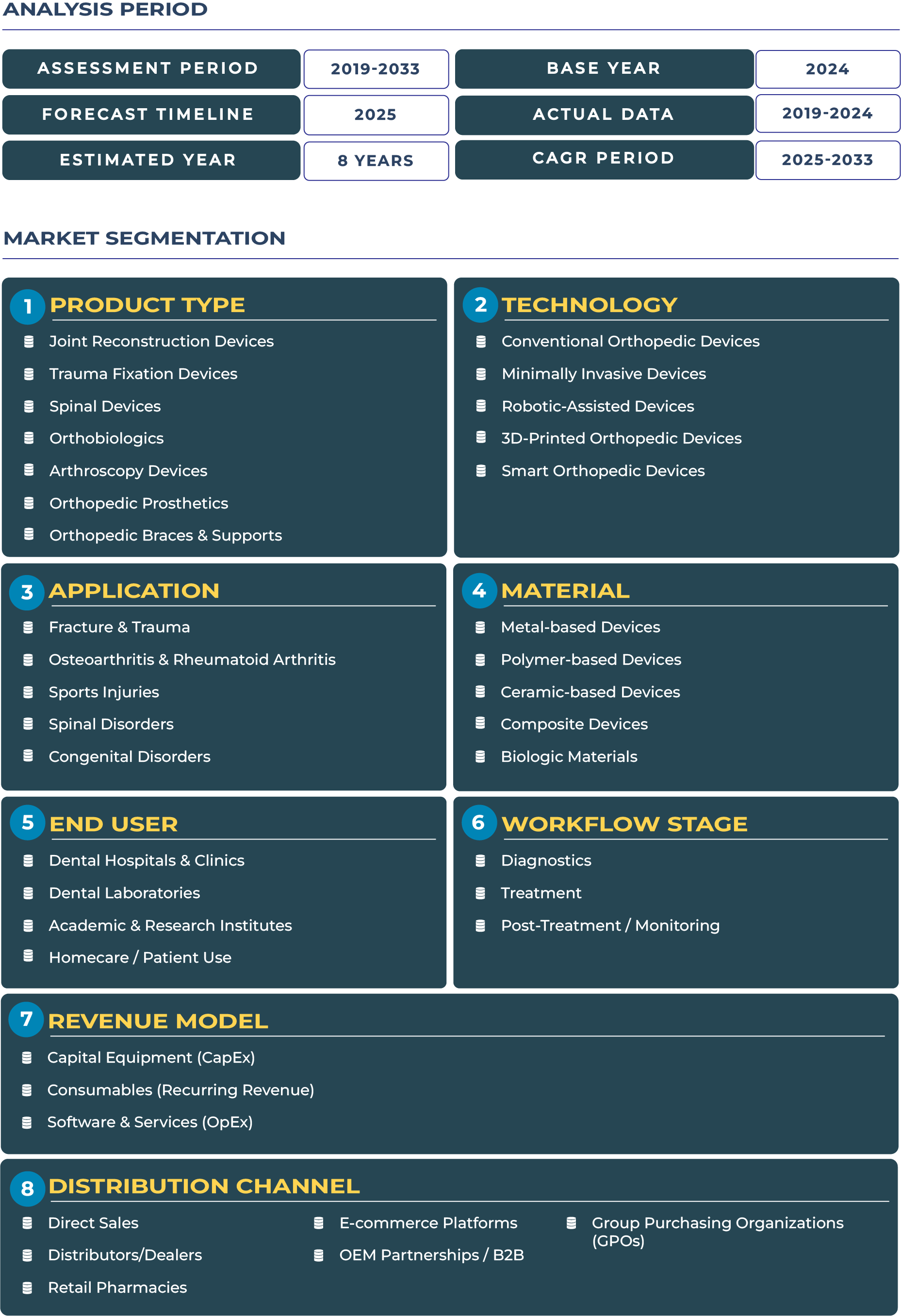Malaysia Orthopedic Devices Outlook: Malaysia’s Rising Profile in Orthopedic Tourism and Device Adoption Shaping 2025–2033 Growth
Malaysia has emerged as a recognized hub for medical tourism in Southeast Asia, attracting patients seeking cost-effective orthopedic procedures without compromising on quality. Orthopedic tourism has become a cornerstone of the country’s healthcare expansion, supported by competitive pricing, internationally accredited hospitals, and a skilled surgeon base. Orthopedic device adoption has kept pace with this trend, with hospitals in Kuala Lumpur, Penang, and Johor investing heavily in joint replacement implants, trauma fixation solutions, and arthroscopy equipment to serve inbound patients.
According to DataCube Research, the Malaysia orthopedic devices market is expected to grow from USD 457.3 million in 2025 to USD 1,069.1 million by 2033, registering an impressive CAGR of 11.2%. This growth trajectory is strongly linked to the expansion of private hospital networks, supportive government policies, and Malaysia’s ability to attract foreign patients seeking advanced orthopedic interventions at affordable rates. Public-private sector collaboration is further strengthening the ecosystem, enhancing adoption across hospitals and specialized clinics.
Growth Drivers and Restraints Defining the Malaysia Orthopedic Devices Ecosystem
Medical Tourism Hub and Private Hospitals Accelerating Device Demand
A major growth driver in the Malaysia orthopedic devices industry is the country’s established position as a medical tourism hub. According to Malaysia Healthcare Travel Council (MHTC), orthopedic care is one of the fastest-growing segments of inbound medical travel. Foreign patients, particularly from Indonesia, Singapore, and the Middle East, are increasingly drawn to Malaysia for joint replacements, spinal procedures, and prosthetics at lower costs compared to Western countries.
In parallel, the rapid expansion of private hospitals such as KPJ Healthcare and IHH Healthcare Berhad is fueling greater adoption of premium orthopedic implants and advanced prosthetics. These hospitals are investing in robotic-assisted surgeries and minimally invasive techniques that require high-quality device ecosystems. Furthermore, Malaysia’s role as a regional distribution node within ASEAN ensures that orthopedic device manufacturers benefit from efficient logistics and trade frameworks that strengthen market penetration.
Price Sensitivity and Regulatory Hurdles Hindering Rapid Expansion
Despite strong demand drivers, the orthopedic devices sector in Malaysia faces structural constraints. A highly price-sensitive domestic population often prioritizes cost over advanced features, limiting penetration of high-end orthopedic prosthetics and biologics outside premium hospitals. This dynamic challenges manufacturers aiming to introduce innovative but costlier devices.
Regulatory processes also play a role. Compliance with approval requirements from the Medical Device Authority (MDA) Malaysia, combined with halal certification considerations for biologics and implants, often extends time-to-market for new products. Additionally, competition from low-cost manufacturers in regional markets, particularly from China and India, intensifies pricing pressure on international brands. These factors collectively temper the otherwise robust growth potential of Malaysia Orthopedic Devices landscape.
Trends and Opportunities Transforming the Malaysia Orthopedic Devices Landscape
Private Hospital Investment and Inbound Patient Growth Redefining Market Dynamics
Malaysia Orthopedic Devices sector is witnessing significant private hospital investments that are transforming care delivery. Hospitals are increasingly adopting digital orthopedic surgery systems, enhancing post-operative monitoring through telemedicine, and promoting fast-track recovery protocols. These advancements are particularly attractive to inbound medical tourists who value quality outcomes paired with affordability.
Cities like Kuala Lumpur and Penang are positioning themselves as international orthopedic care destinations. Public-private partnerships have further bolstered infrastructure, ensuring that regional hospitals can cater to both domestic and foreign patients requiring trauma fixation devices and spinal implants.
Medical Tourism Bundles and Regional Manufacturing Driving Opportunities
Opportunities in the Malaysia orthopedic devices industry extend beyond product sales into service integration. Medical tourism-focused bundles—where surgery, rehabilitation, and accommodation are combined—are gaining traction among international patients. This bundling creates new value chains for orthopedic device companies to collaborate with hospitals.
At the same time, Malaysia is exploring opportunities to strengthen regional manufacturing capabilities, which could reduce dependence on imports and improve supply chain resilience. The introduction of affordable implant lines tailored to Southeast Asian patients is another growth lever that could expand orthopedic adoption while addressing the country’s price-sensitive population.
Competitive Landscape: International Brands and Local Ecosystem Partnerships Driving Orthopedic Innovation
The Malaysia orthopedic devices market reflects a dynamic interplay between multinational companies and local healthcare providers. Global players such as Smith & Nephew have expanded their product offerings in the country, focusing on joint reconstruction and arthroscopy devices for high-demand segments. These companies often partner with chain hospitals to align their solutions with medical tourism strategies.
Local distributors and service providers play a critical role in overcoming regulatory and logistics barriers. One notable strategy involves creating medical tourism packages where orthopedic implants and prosthetics are integrated with post-operative rehabilitation and hospital partnerships. Another trend involves localized packaging and halal-compliant labeling to address cultural and regulatory sensitivities, enabling global brands to increase acceptance in the Malaysian orthopedic devices ecosystem. Together, these strategies are ensuring Malaysia Orthopedic Devices market evolves into a globally relevant yet locally adapted healthcare segment.







